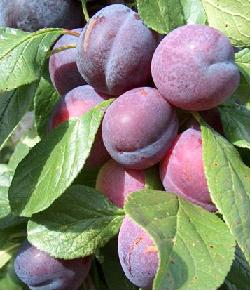An Elderberry Fruit, also known as sambucus, is really a fruit-bearing, deciduous plant with a minimum of 30 recognized species, most frequently discovered growing within the upper Hemisphere. The elderberry Fruit shrub generally grows to around 10 feet (3 meters) high and exhibits yellow and white flowers during the early summer, accompanied by dark blue or black berries that normally ripen somewhere around September. The fruits are delicious when ripe and have been thought of having medicinal benefits.
Ripened elderberries Fruits are usually used similar to some other berries in fruit muffins, jams and pies. The dried flowers may also be steeped in drinking water for making elderberry tea. The fruits are crushed to produce elderberry Fruit juice. The fresh fruits from the elderberry Fruit shrub may be utilized in all the ways and means other berries are utilized, including being a topping for ice cream and pancakes, in cobblers, or even
Health Benefits of Eating Elderberries Fruit
Elderberries Fruit Used because of its antioxidant activity, to reduce cholesterol, Elderberries Fruit boost vision, Elderberries Fruit increase the immune system, Elderberries Fruit enhance heart wellbeing and also for coughs, common colds, influenza, bacterial and viral infections as well as tonsilitis. Elderberries Fruit drink was put to use to heal a flu outbreak in Panama in 1995.
Elderberries Fruit have already been a remedy for hundreds of years in Canada and America, European countries, Western Asia, and also North Africa. That is why the therapeutic advantages of Elderberries Fruit have been researched and rediscovered. Bioflavonoids along with other proteins from the juice eliminate the capability of cold and influenza viruses to invade a cell. Individuals with the influenza who consumed elderberry juice claimed less serious symptoms and felt a lot better quicker than those that did not.
Elderberries Fruit give you natural pigments, tannin, carotenoids, amino acids, flavonoids, sugar, rutin, vitamin A and B, viburnic acid along with a huge quantity of ascorbic acid. They are also gently laxative, diuretic, as well as diaphoretic. Flavonoids, such as quercetin, are considered to be the cause of the healing activities of the elderberry blossoms and fruits. Based on test tube studies2 these types of flavonoids contain anthocyanins which are potent antioxidants and defend cells against damage.
Elderberries Fruit had been stated in the CRC Handbook of Medicinal Herbs since 1985, and are also mentioned in the 2000 Mosby's Nursing Drug guide for common colds, influenza, candida albicans, congestion of nose and chest, and hay fever. Hasassah's Oncology Lab in Israel has identified that Elderberries Fruit energizes the human body's defense mechanisms and they are healing cancer and AIDS sufferers with it. The vast range of medical advantages (from influenza and common colds to devastating asthma, diabetes, and slimming) is most likely because of the enhancement of every person's immune system.
Elderberries Fruit had been stated in the CRC Handbook of Medicinal Herbs since 1985, and are also mentioned in the 2000 Mosby's Nursing Drug guide for common colds, influenza, candida albicans, congestion of nose and chest, and hay fever. Hasassah's Oncology Lab in Israel has identified that Elderberries Fruit energizes the human body's defense mechanisms and they are healing cancer and AIDS sufferers with it. The vast range of medical advantages (from influenza and common colds to devastating asthma, diabetes, and slimming) is most likely because of the enhancement of every person's immune system.
Scientists conducting research on Elderberries Fruit confirmed that elderberry anthocyanins improve immune function by increasing the creation of cytokines. These special proteins work as messengers inside the body's defence mechanism to help control immune response, thereby assisting to protect the body against illness. More studies indicated that anthocyanins discovered in elderberries have appreciably more antioxidant capability than both vitamin E and vitamin C.
Research at University of Graz in Austria discovered that elderberry extract decreases oxidation of low-density lipoprotein (LDL) cholesterol. Oxidation of low-density lipoprotein cholesterol is suggested as a factor in atherogenesis, thereby causing cardiovascular disease.










